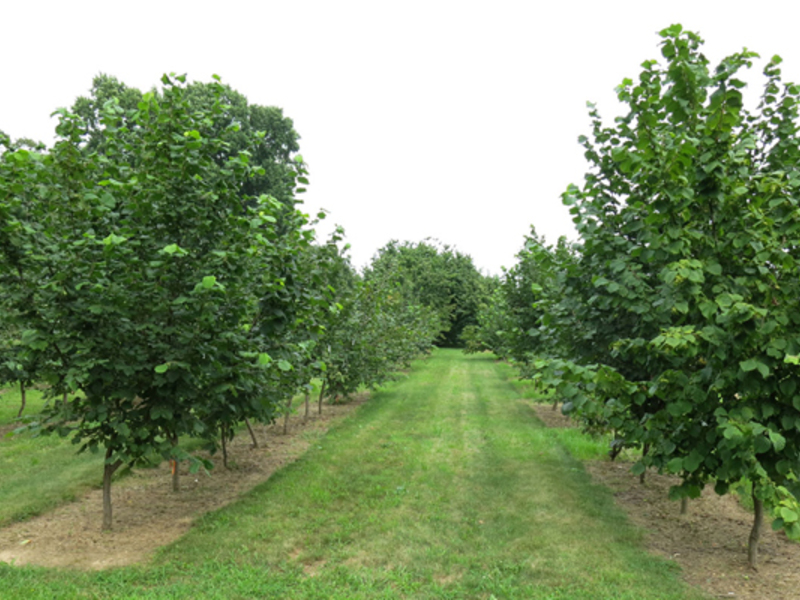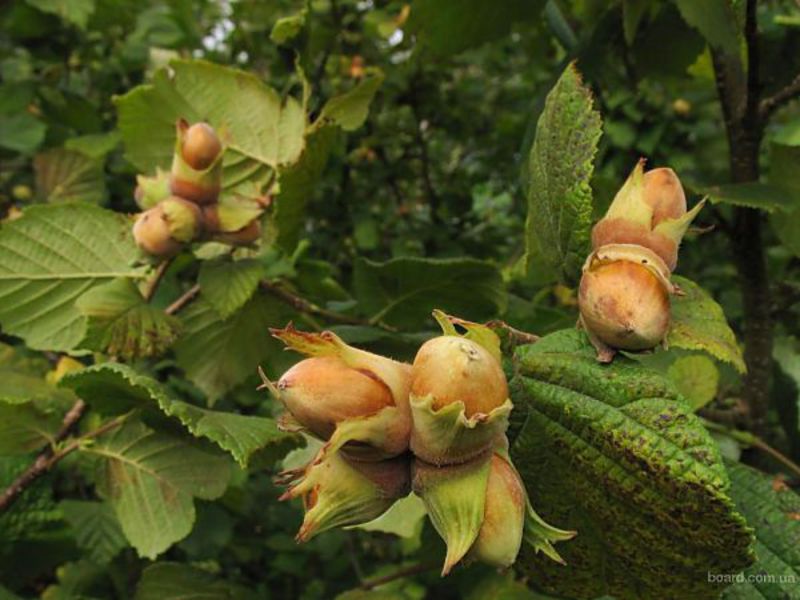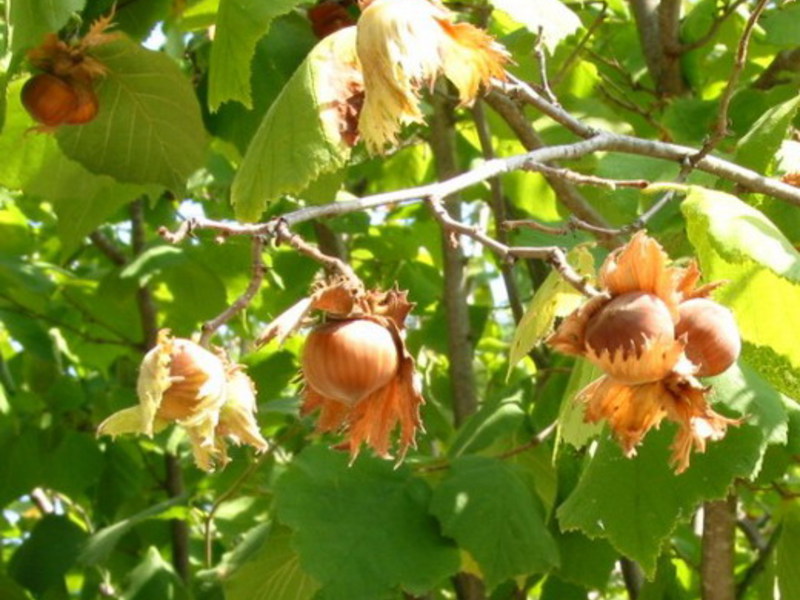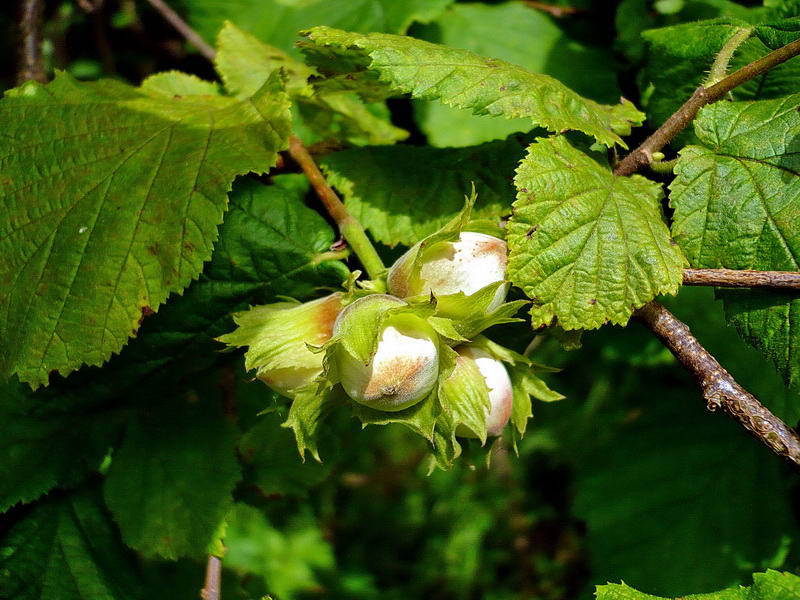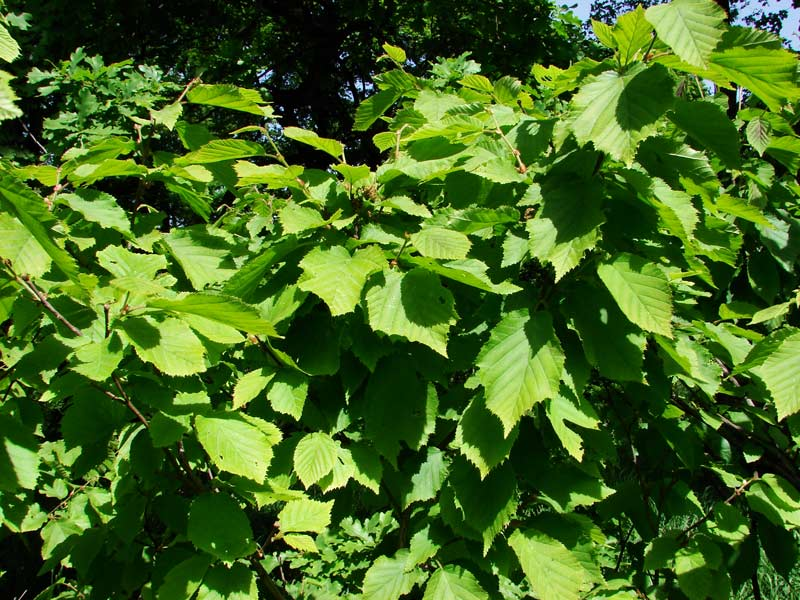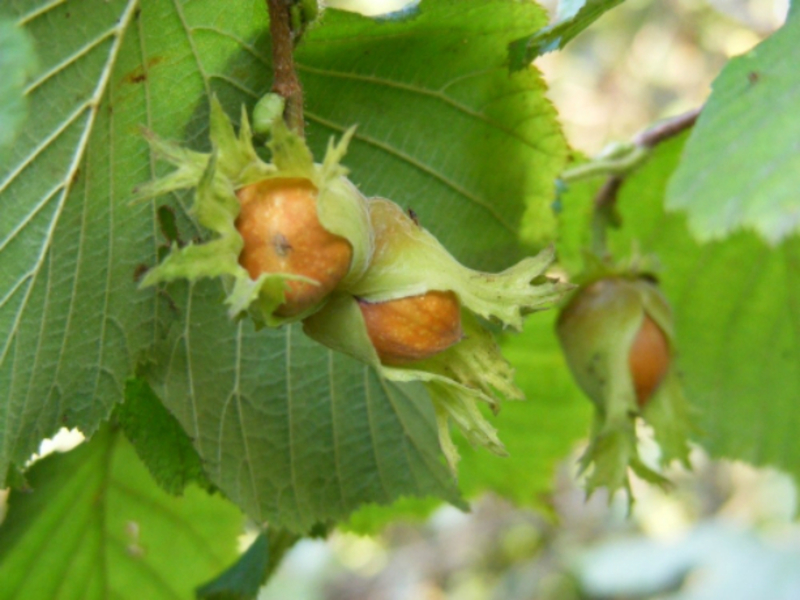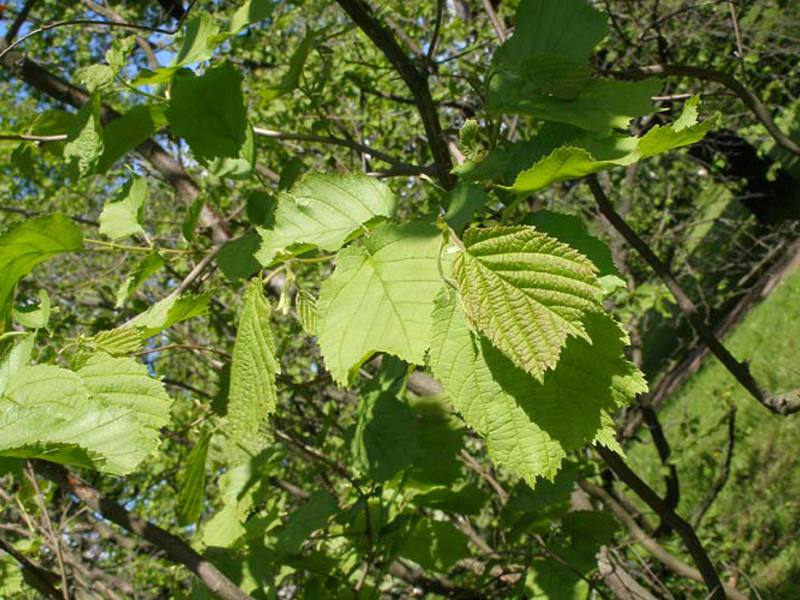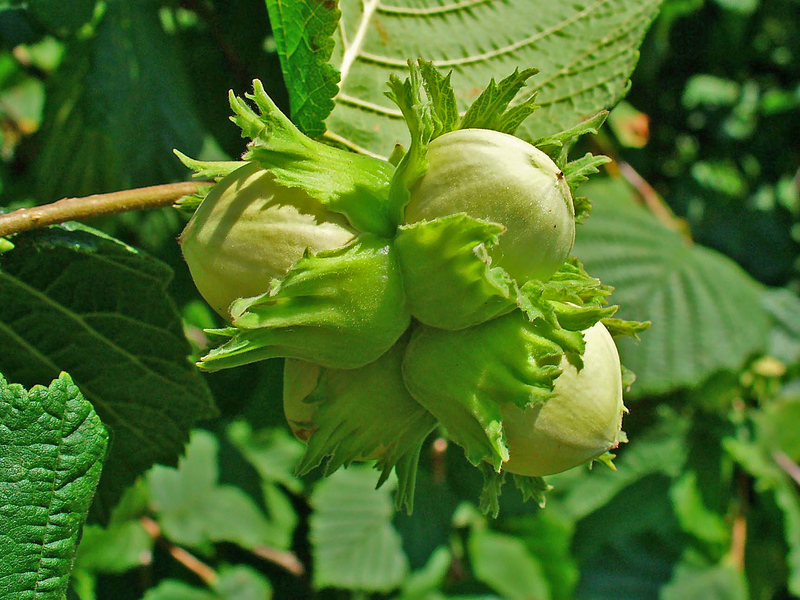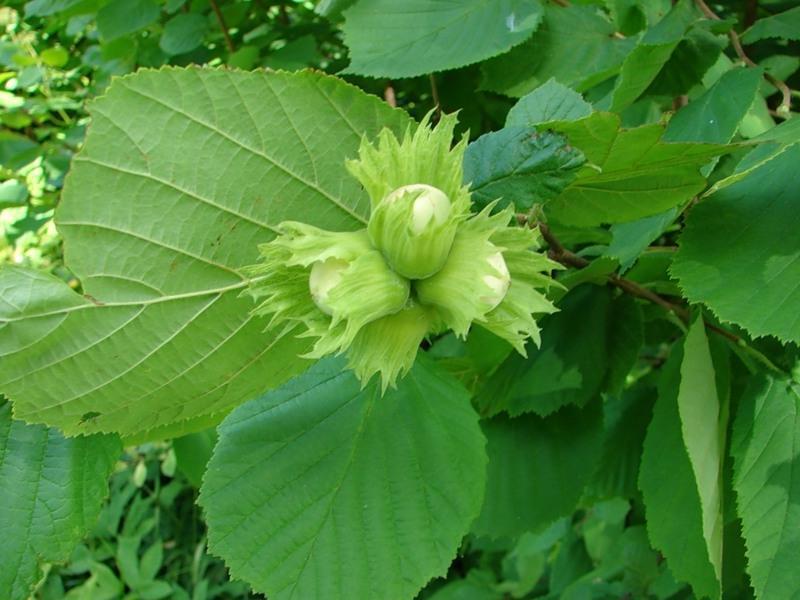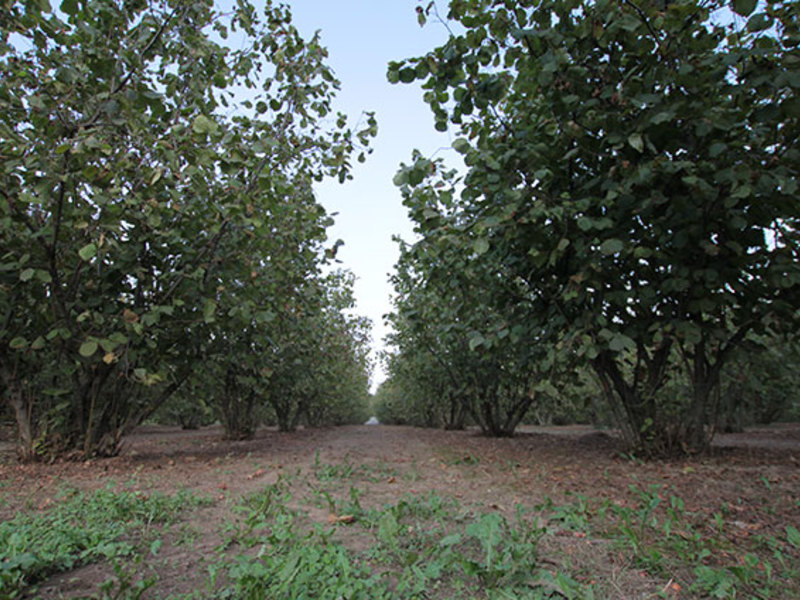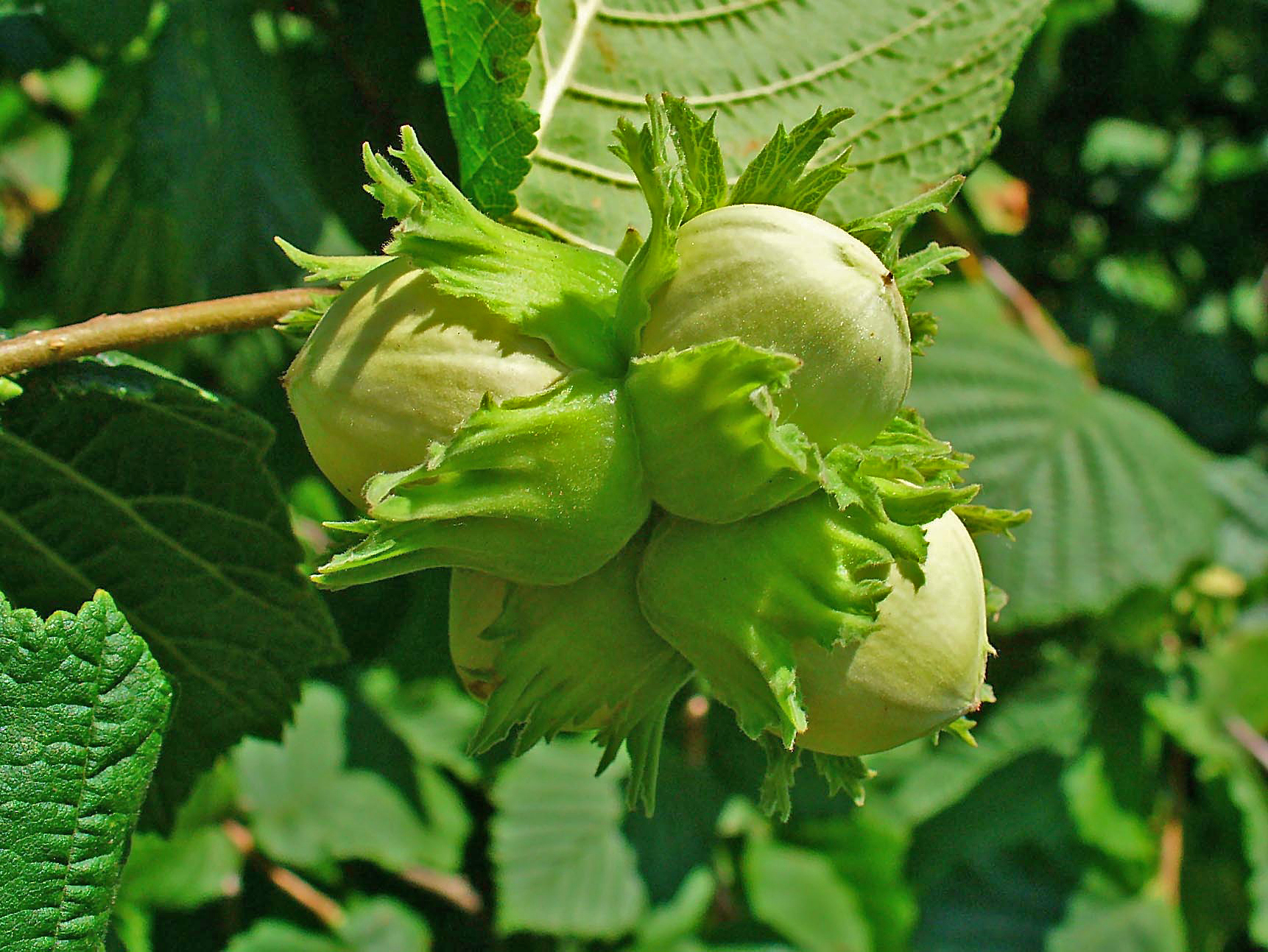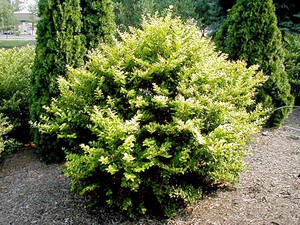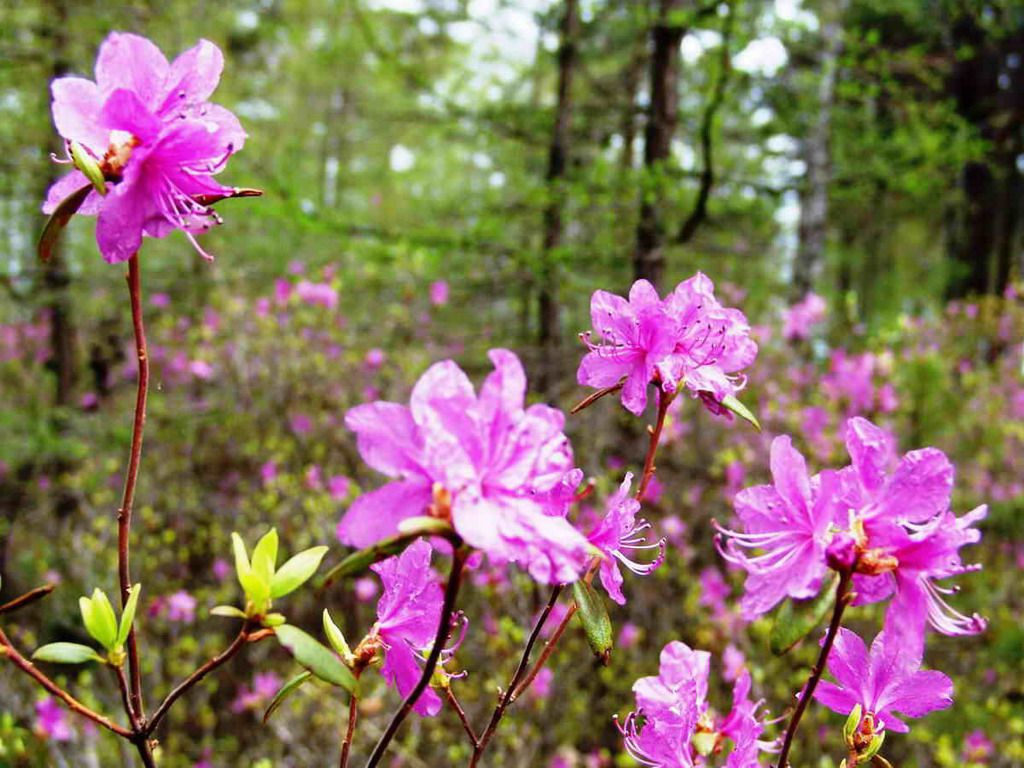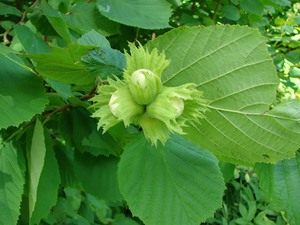 Although the homeland of hazel is Asia Minor, today it can often be found in the center of Europe, the forests of the Caucasus, as well as America and Canada. In recent years, many gardeners have managed to appreciate not only its pronounced decorative properties, but also taste, in which it has no equal. This representative of the birch family laid the foundation for its wide development in the southern regions, where rather large areas were allocated for the cultivation of hazel.
Although the homeland of hazel is Asia Minor, today it can often be found in the center of Europe, the forests of the Caucasus, as well as America and Canada. In recent years, many gardeners have managed to appreciate not only its pronounced decorative properties, but also taste, in which it has no equal. This representative of the birch family laid the foundation for its wide development in the southern regions, where rather large areas were allocated for the cultivation of hazel.
In the wild, this plant, also known as hazelnuts, can be found in the forests of the Southern Urals and Perm Territory... And surely novice gardeners would like to get answers to many questions regarding hazel: is it a shrub or a tree, what are the features of its cultivation?
Content
Hazel: is it a bush or a tree?
Although hazel is usually attributed to the genus of shrubs, it provides for several dozen representatives belonging to the group of trees. Such, for example, is a bear nut, which grows in the form of a slender and tall tree, decorated with an attractive crown. Basically, however, hazel grows as a bush. In the wild, it often forms a dense undergrowth in deciduous forests. The most famous is the hazelnut, which many know as common hazel. In this regard, I would like to mention the history of the word "hazel". It has a primordially Russian origin: the leaves of the bush strongly resemble in their shape the body of the lake fish bream, which was hunted by the inhabitants of Russia in ancient times.
What does hazel look like?
 Getting acquainted with the existing species of hazel, it can be noted that most of them are deciduous shrubs, covered with leaves of large sizes, rounded, with a pronounced rich green color. Hazel grows best in warm areas, where there is sufficient moisture and fertile soil. It is most commonly found in deciduous forests where it does well with neighbors such as oaks, elms and maples.
Getting acquainted with the existing species of hazel, it can be noted that most of them are deciduous shrubs, covered with leaves of large sizes, rounded, with a pronounced rich green color. Hazel grows best in warm areas, where there is sufficient moisture and fertile soil. It is most commonly found in deciduous forests where it does well with neighbors such as oaks, elms and maples.
Hazelnuts are most represented in the undergrowth, where they form a solid wall. Wild-growing hazel usually looks like branched shrubsforming many stems that form directly from the rhizome.
- these shrubs are quite tall, reaching a height of 3-5 meters;
- Hazelnuts can be propagated vegetatively (with the help of offspring or cuttings) or by nut seeds. When growing hazel through sowing seeds, only specimens at the age of 6-7 years enter fruiting. You can bring this moment closer if you propagate hazel in a vegetative way, which allows shrubs to start bearing fruit already in the fourth year;
- in summer, the hazel bush is extremely difficult to confuse with other plants: this is indicated by its oval leaves and small teeth and a sharp tip present along the edge;
- an additional sign of a shrub is the presence of a slightly rough texture to the touch.
Most species of hazelnuts grow as tall, large shrubs with a height of 5-6 meters and an even bark. Moreover, the latter can be modified from gray to terracotta brown... The characteristic color of young shoots is gray-green, which can be supplemented with small yellowish specks. Young hazel bushes can often be mistaken for linden shoots, but the difference is still present due to the dense pubescence.
Hazel shoots can sometimes pass themselves off as elm bushes. They have similar bark and leaves, which have the same color and texture. To distinguish them from each other, you need to pay attention to the trunk, which is only one of the elm. In the shoots of hazel, many branches are formed, in which the sign of a shrub is manifested. Also, hazel can be distinguished by its buds, which are gray-green in color and oval. Elm buds, on the other hand, are reddish with a pointed shape.
Features of the view
 Hazel is a representative of monocotyledonous plants, in which male and female flowers are formed on the same crop during the growing season. Mens flowers look like earrings, form soft, yellowish inflorescences. They can easily be mistaken for birch or alder earrings. If you plant them in June-July, then in the fall they begin to grow, and with the arrival of spring, after a successful wintering, they begin to bloom. Once ripe, the wind carries pollen, allowing hazel to multiply.
Hazel is a representative of monocotyledonous plants, in which male and female flowers are formed on the same crop during the growing season. Mens flowers look like earrings, form soft, yellowish inflorescences. They can easily be mistaken for birch or alder earrings. If you plant them in June-July, then in the fall they begin to grow, and with the arrival of spring, after a successful wintering, they begin to bloom. Once ripe, the wind carries pollen, allowing hazel to multiply.
Female flowers are extremely difficult to distinguish. They are formed by small flowers that are located inside special buds that grow in the previous season. When it is time to bloom, the leafy scales, behind which the inflorescences are hidden, begin to open, as a result, as a result, wind-carried pollen can easily get there.
Hazel species
Hazelnut includes about 20 types, within each of which many different cultures can be distinguished. And although they have different properties, most of them are frost-resistant and durable plants. Hazel can grow in the most unsuitable conditions for many other plants, since it is undemanding to the soil, however, the presence of organic matter in the soil accelerates the process of its development and fruiting.
Without exception, all hazelnut varieties respond positively to moisture, but it should be in moderation. Sometimes they can grow quite well in conditions of little shading, but this does not allow them to fully manifest all their decorative properties and ensure high yields. Therefore, it is best to plant them in open, sunny areas.
Common hazel
Usually it grows in the form of a large multi-stemmed shrub, reaching a height of 4-6 meters, which is decorated with a wide spreading crown. Unlike other varieties, common hazel begins to bloom before the leaves open. Therefore she is of particular interest to bees... When many trees and shrubs are just getting ready to bloom, golden catkins begin to bloom at the hazel, thereby providing nutrition to the weakened bees.
- at the beginning of the growing season, hazelnut leaves have a dull green color above, and light below, but in the fall the foliage begins to turn yellow evenly;
- at different stages of the life cycle, hazel provides different growth. In the first years of life, its increase in height is extremely subtle. Growth is activated in the fifth or sixth year, which leads to the appearance of a large number of young shoots;
- in the wild, hazel is most often found in the European territory of Russia and on the Crimean peninsula. There are many of its representatives in Western Europe and the Caucasus.
Bear nut, or tree hazel
Bear nut stands out among other representatives of shrubs, since it belongs to the group of tree-like plants. Can grow up to 15-20 meters, having a crown diameter of 6-8 meters.The characteristic feature of the bear nut is a slender, beautiful trunk.
 you can recognize this tree by its amazing wide-pyramidal crown, which is formed by dense dark green leaves that bloom long before this happens with other plant species. The hazel-tree is decorated with whitish-gray bark, which is presented in the form of narrow plates;
you can recognize this tree by its amazing wide-pyramidal crown, which is formed by dense dark green leaves that bloom long before this happens with other plant species. The hazel-tree is decorated with whitish-gray bark, which is presented in the form of narrow plates;- Unlike other species of hazel, this variety provides high growth per season, can feel good in shading conditions, is frost-resistant, and also tolerates long periods of drought;
- It demonstrates its best qualities when grown on humus-rich soils. Fruits-nuts look a bit unusual, which have a delicate wrapper, inside which there are serrated slices of small thickness;
- despite the fact that tree hazel does not provide so many representatives, due to its unpretentiousness it can grow up to 200 years, creating shoots with the help of cuttings and seeds;
- in the wild, the hazel-tree is represented in the Caucasus and the Balkans, as well as in Asia Minor. Treelike hazel is not often found in broad-leaved mountain forests. In our country, this plant is under protection and is grown in reserves. Due to its pronounced decorative properties, bear walnut is often used to decorate streets and alleys, and it is also used in linear plantings.
Lombard nut
As a monumental member of its genus, this shrub is adorned with beautiful straight gray branches that can provide it height up to 10 meters... The leaves of the Lombard nut look original, having a rounded shape, which is decorated with jagged edges. This variety of hazel can grow only in the presence of warm conditions, they are extremely poorly tolerated by cold. For many centuries it has been cultivated in the Balkans and Asia Minor, where it has survived as a nut-bearing bush.
During the growing season, the bush forms dense drooping annual shoots. The characteristic shape of hazel leaves is broadly oval, often rounded, in diameter they can reach 10-12 cm. At the beginning, they have a heart-shaped shape, which, as it moves up, shortens and ends with a sharp apex. Large male earrings 10 cm long give additional appeal to hazel.They are presented in the form of boring rosettes, where up to 8 pieces can be present, which are covered with a fluffy tubular wrap.
Based on the Lombard nut, cultivated varieties of hazelnutswidely used in industry. A high yield can only be obtained when growing this species on nutrient-rich loose soils. It is also widely used for decorative purposes.
Red-leaved hazel
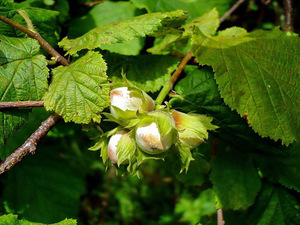 This type of hazel looks very original, since it differs in the color of the foliage against the background of other varieties. It looks like a multi-stemmed shrub up to 4 meters high, which is decorated with large leaves of dark purple color. During the growing season, nuts are formed in a red wrapper, which contain pink kernels inside.
This type of hazel looks very original, since it differs in the color of the foliage against the background of other varieties. It looks like a multi-stemmed shrub up to 4 meters high, which is decorated with large leaves of dark purple color. During the growing season, nuts are formed in a red wrapper, which contain pink kernels inside.
Red-leaved hazel is the most widespread as an ornamental shrub... Considering that it is mainly grown in the southern regions, it is unable to endure the harsh winters of the temperate Russian latitudes. Attempts to cover it before winter are only partially successful: although this type of hazelnut does not completely die, in subsequent years it will not be expected to bloom or nuts. In such cases, it is valuable only as an ornamental plant, giving the site a special uniqueness.
Manchurian hazel
This crop is successfully grown in the difficult conditions of the Far East, Primorye, as well as Korea and North China, so it tolerates frost well and feels in a lot of shade.It grows in the form of a shrub up to 4-5 meters high, forming a large number of strongly branching shoots.
It is valuable due to the fruit that has healing properties. At the same time, this type of hazel has pronounced decorative properties. First of all, this is demonstrated by a brown color, densely pubescent young shoots and wide soft leaves, which in the warm season have a dark green color, and at the end of the growing season change to orange or golden shades. In autumn, hazelnuts, which have a pointed shape, ripen. They are very popular in Chinese medicine because they have excellent anti-inflammatory properties.
Conclusion
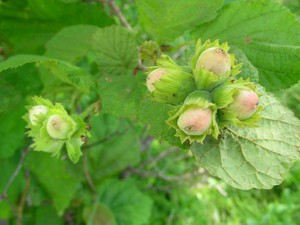 For most uninformed people, hazel seems to be a rather interesting plant, because without being a specialist, it is difficult to say about a hazel - a tree or a shrub. Although not only because of this, hazel deserves attention. While trying to get answers to other questions, many will find out that hazelnuts are often used as an ornamental plant, although only this is not limited to its value. Indeed, in the fall, hazelnuts ripen with nuts, which in some varieties have healing properties. Therefore, the cultivation of this shrub on the site is not only beneficial, but also beneficial.
For most uninformed people, hazel seems to be a rather interesting plant, because without being a specialist, it is difficult to say about a hazel - a tree or a shrub. Although not only because of this, hazel deserves attention. While trying to get answers to other questions, many will find out that hazelnuts are often used as an ornamental plant, although only this is not limited to its value. Indeed, in the fall, hazelnuts ripen with nuts, which in some varieties have healing properties. Therefore, the cultivation of this shrub on the site is not only beneficial, but also beneficial.
